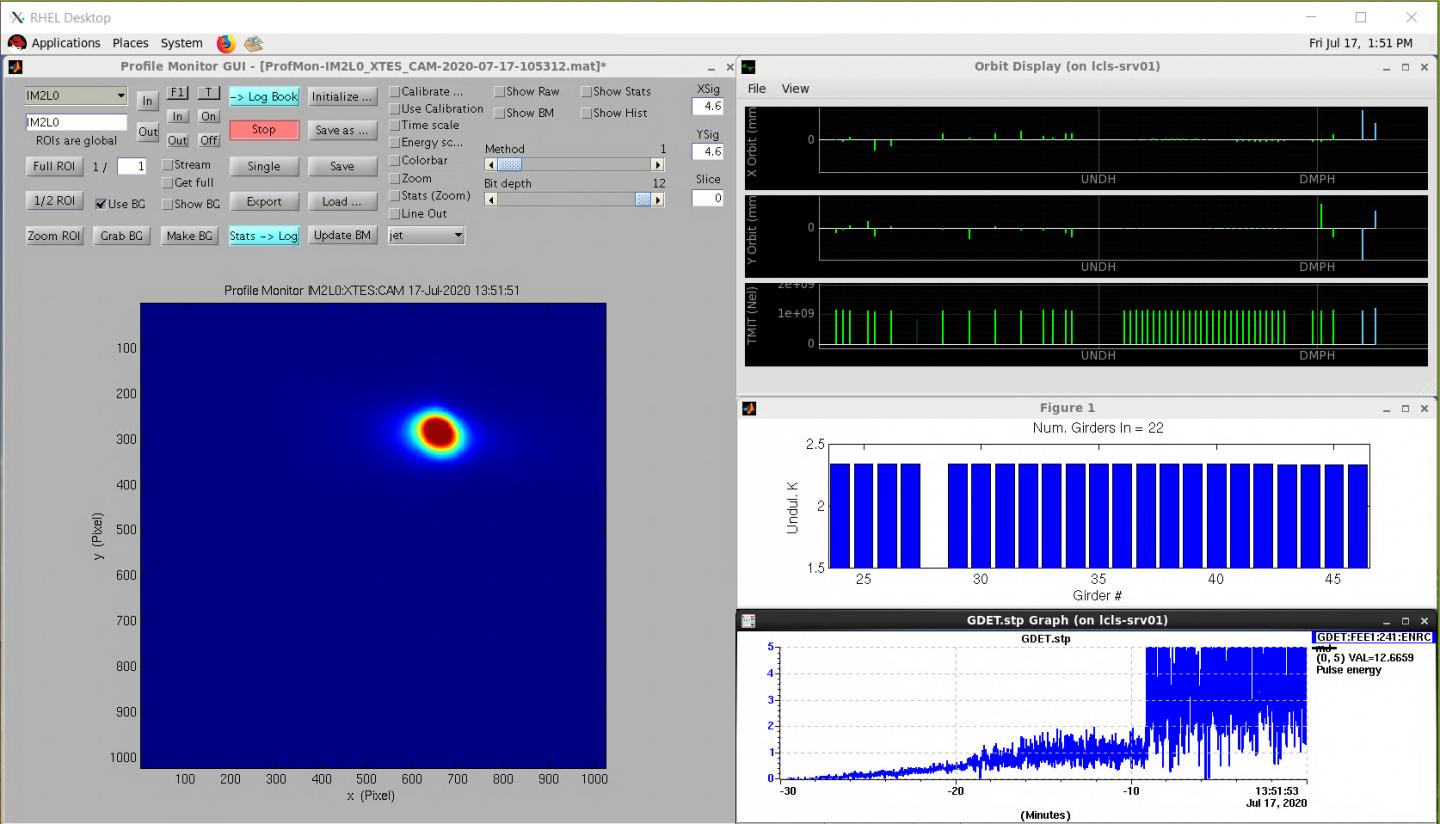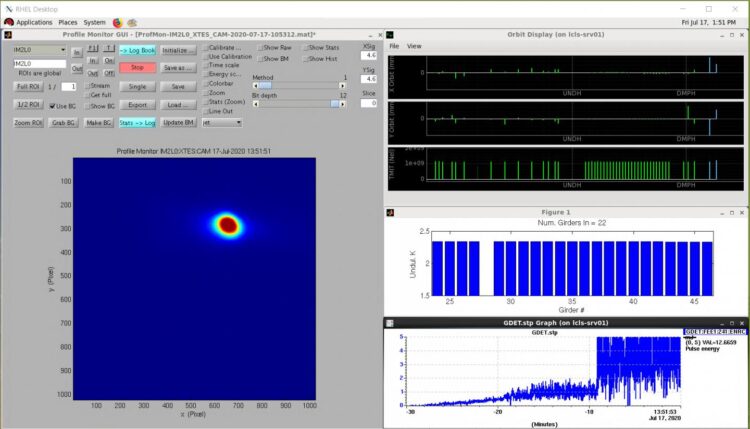Marking the beginning of the LCLS-II era, the first phase of the major upgrade comes online

Credit: SLAC National Accelerator Laboratory
Just over a decade ago in April 2009, the world’s first hard X-ray free-electron laser (XFEL) produced its first light at the US Department of Energy’s SLAC National Accelerator Laboratory. The Linac Coherent Light Source (LCLS) generated X-ray pulses a billion times brighter than anything that had come before. Since then, its performance has enabled fundamental new insights in a number of scientific fields, from creating “molecular movies” of chemistry in action to studying the structure and motion of proteins for new generations of pharmaceuticals and replicating the processes that create “diamond rain” within giant planets in our solar system.
The next major step in this field was set in motion in 2013, launching the LCLS-II upgrade project to increase the X-ray laser’s power by thousands of times, producing a million pulses per second compared to 120 per second today. This upgrade is due to be completed within the next two years.
Today the first phase of the upgrade came into operation, producing an X-ray beam for the first time using one critical element of the newly installed equipment.
“The LCLS-II project represents the combined effort of five national laboratories from across the US, along with many colleagues from the university community and DOE,” said SLAC Director Chi-Chang Kao. “Today’s success reflects the tremendous value of ongoing partnerships and collaboration that enable us to build unique world-leading tools and capabilities.”
XFELs work in a two-step process. First, they accelerate a powerful electron beam to nearly the speed of light. They then pass this beam through an exquisitely tuned series of magnets within a device known as an undulator, which converts the electron energy into intense bursts of X-rays. The bursts are just millionths of a billionth of a second long – so short that they can capture the birth of a chemical bond and produce images with atomic resolution. The LCLS-II project will transform both elements of the facility – by installing an entirely new accelerator that uses cryogenic superconducting technology to achieve the unprecedented repetition rates, along with undulators that can provide exquisite control of the X-ray beam.
Powerful and precise
Over the past 18 months, the original LCLS undulator was removed and replaced with two totally new systems that offer dramatic new capabilities. Each of these undulators contains thousands of magnets stretching over 100 meters; together they create magnetic fields that are tens of thousands of times stronger than the Earth’s. This generates forces equivalent to a few tons of weight, while at the same time not allowing the structure that holds the magnets to distort by more than a hundredth of the width of a human hair.
The new undulators were designed and prototyped by DOE’s Argonne National Laboratory and built by Lawrence Berkeley National Laboratory, and have been installed at SLAC over the past year. Today, the first of these systems demonstrated its performance in readiness for the experimental campaigns ahead. Scientists in the SLAC Accelerator Control Room were able to direct the electron beam from the existing LCLS accelerator through the array of magnets in the new “hard X-ray” undulator. Over the course of just a few hours, they produced the first sign of X-rays, and then precisely tuned the configuration to achieve full X-ray laser performance.
“Reaching the first light is a milestone we all have been looking forward to,” said Henrik von der Lippe, Engineering Division director at Berkeley Lab. “This milestone shows how all the hard work and collaboration has resulted in a scientific facility that will enable new science.”
He added, “Berkeley Lab’s contribution of the hard X-ray undulator design and fabrication used our experience from providing undulators to science facilities and our longstanding strength in mechanical design. It is rewarding to see the fruits from years of dedicated Engineering Division teams delivering devices that meet all expectations.”
The scientific impact of the new undulators will be significant. One major advance is that the separation between the magnets can be changed on demand, allowing the wavelength of the emitted X-rays to be tuned to match the needs of experiments. Researchers can use this to pinpoint the behavior of selected atoms in a molecule, which among other things will enhance our ability to track the flow and storage of energy for advanced solar power applications.
The undulator demonstrated today is optimized for the hard X-ray regime, and will be able to double the peak X-ray energy LCLS can generate. This will provide much higher precision insights into how materials respond to extreme stress at the atomic level and into the emergence of novel quantum phenomena.
Next steps
Beyond the undulators lies the Front End Enclosure, or FEE, which contains an array of optics, diagnostics and tuning devices that prepare the X-rays for specific experiments. These include the world’s flattest, smoothest mirrors that are a meter in length but vary in height by only an atom’s width across their surface. Over the next few weeks, these optics will be tested in preparation for more than 80 experiments to be conducted by researchers from around the world over the next six months.
“Today marks the start of the LCLS-II era for X-ray science,” said LCLS Director Mike Dunne. “Our immediate task will be to use this new undulator to investigate the inner workings of the SARS-CoV-2 virus. Then the next couple of years will see an amazing transformation of our facility. Next up will be the soft X-ray undulator, optimized for studying how energy flows between atoms and molecules, and thus the inner workings of novel energy technologies. Beyond this will be the new superconducting accelerator that will increase our X-ray power by many thousands of times. The future is bright, as we like to say in the X-ray laser world.”
###
Media Contact
Alison Sundermier
[email protected]
Original Source
https:/





